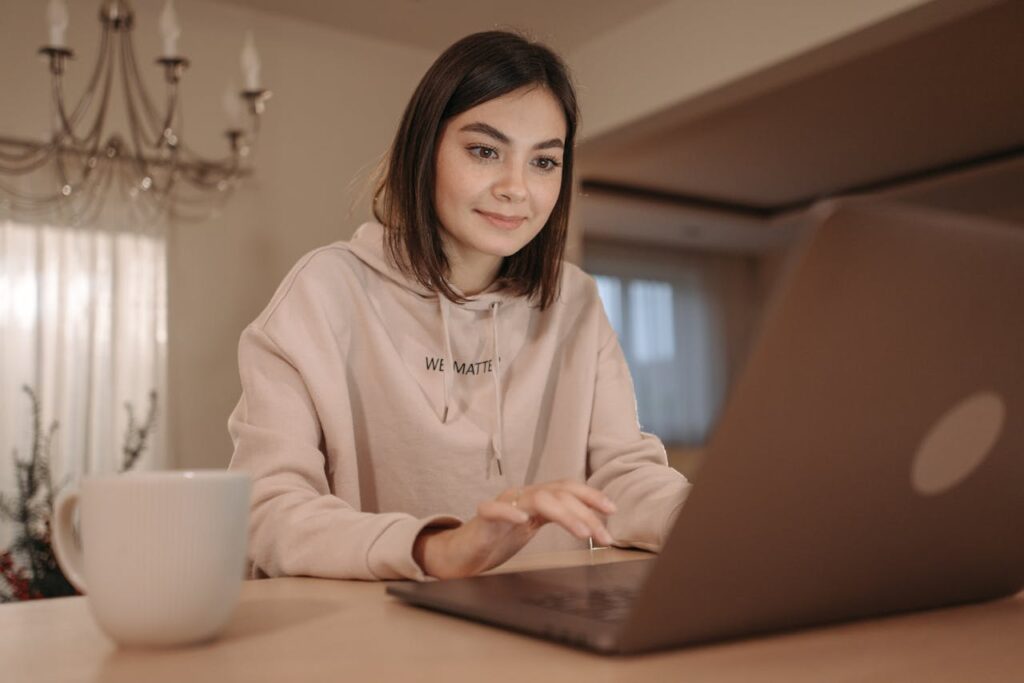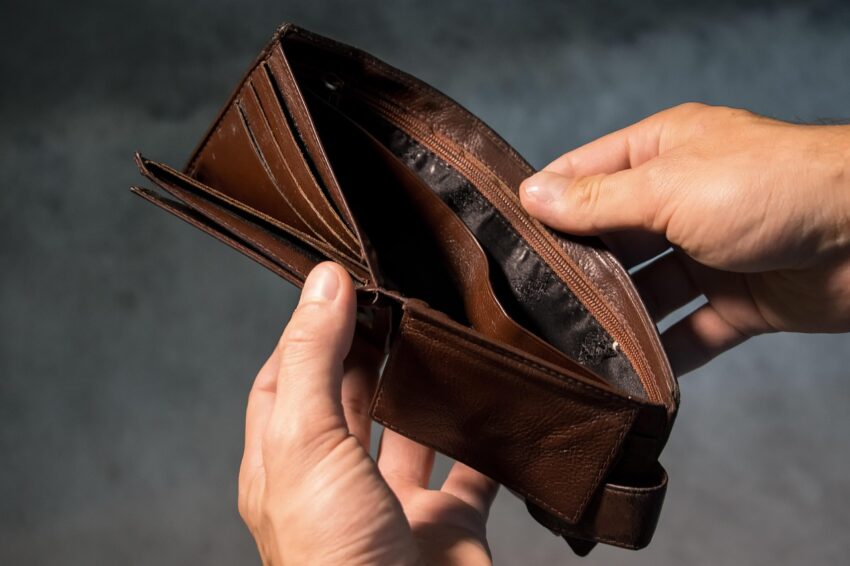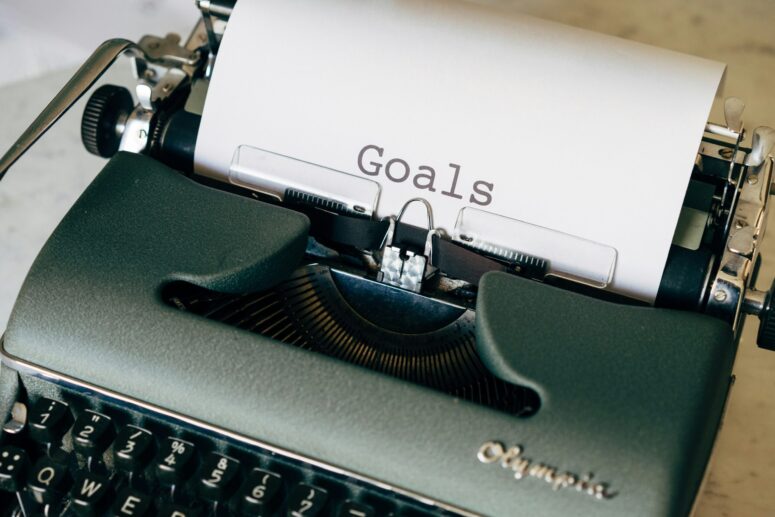Embracing the no-buy challenge was like hitting the reset button on my life. What started as a simple experiment to curb unnecessary spending turned into a journey of self-discovery and financial insight. Throughout the no-spend month, I uncovered surprising things about my spending habits, priorities, and the true value of money. Read on to learn the insights I gained from my first month-long no-buy challenge and how it reshaped my perspective on personal finance.
I may earn a small commission via affiliate links in this post. This is at no extra cost to you! Read the full disclosure here.
Why I Decided to Try It
The reason was straightforward: I was determined to pay off my student loan debt and buy my first home before turning 40. To achieve this, I embarked on my first no-spend month—a personal challenge to avoid unnecessary spending for 30 days. The extra money saved would go directly towards my debt, with the ultimate goal of owning my own home.
The idea behind a no-buy challenge is pretty straightforward. For 4 weeks, you only spend money on the absolute essentials—things like rent, utilities, groceries, and gas for your car. Everything else is off-limits. No shopping, no eating out, no impulse purchases. It’s a financial detox of sorts, a chance to hit the reset button on your spending habits.
At first, a no-spend month felt like jumping off the deep end—goodbye, little luxuries! I worried I’d miss out, but I discovered the lessons I learned were far better than any indulgence I left behind.
At the end of the month, I completed my first challenge, then my second, then my third. And purchased my home two months shy of my 40th birthday!

How I Prepared for My No-Buy Challenge
Before diving into the no-buy challenge, I knew I had to get my ducks in a row. First, I took a good look at my usual spending—scanning through bank statements to see where my cash was vanishing (think dining out, shopping sprees, and random splurges). This gave me a solid grasp of my monthly money habits.
Then, I made a list of unavoidable expenses for the month—rent, car payments, insurance, you name it. This way, I knew exactly what I still needed to cover and could budget better.
The real challenge was spotting my spending triggers. What would make me cave? For me, it was online shopping and those tempting trips to antique stores. So, I made a game plan to dodge those temptations and stick to the no-buy challenge.
Surprising Discoveries About My Spending Habits During the Challenge
Jumping into the 30-day spending challenge had me feeling a bit on edge. I’m usually pretty good with my money, but tracking every single purchase for a whole month? That felt like opening a financial Pandora’s box. And wow, did it deliver some surprises!
First off, I was blown away by how many tiny, mindless purchases I was making. The quick coffee stops, random grocery splurges, and those ‘oops, forgot about that’ online buys (my Amazon bill was out of control)—it all added up way quicker than I thought. Seeing it all in black and white made me realize how the little things can totally wreck your budget.
But the real eye-opener was figuring out how to cut back. I found all these clever ways to save money I’d never thought of before. Bringing my lunch to work? No problem. Discovering fun, free stuff to do on weekends? Totally manageable. Making these small changes wasn’t nearly as painful as I’d imagined.
Overall, the 30-day challenge transformed my mindset. It made me way more mindful of my spending and gave me some solid tricks to keep my budget in check. I wish I’d done this a decade sooner, but I was thrilled with what I’ve learned and have made this a regular part of my budget toolbox for the last 8 years.
The Money-Saving Habits I Formed During My No-Spend Month
Deciding to do a no-buy challenge totally flipped my view on money. At first, it was a real struggle to break my usual spending habits. But as the days went by, I picked up some seriously useful money-saving tricks that have stuck around long after the challenge.
One of the biggest eye-openers was how much I was spending mindlessly every day. Those little $5 and $10 splurges? They add up way faster than you’d think. Once I started paying closer attention to every dollar, I got a lot more deliberate about where my money went.
Planning my meals and making a proper grocery list turned out to be a game-changer for cutting down food costs. No more scrambling for takeout because I didn’t have the right stuff on hand. Plus, I got pretty good at using up what was already in my pantry and fridge.
Related: 20 Tips for Saving Money at the Grocery Store
Another habit that’s been a lifesaver is hunting for deals. During my no-spend month, I used methods like using cash-back apps to earn gift cards if I needed to purchase something. This is a habit that has continued to this day.
Overall, that no-spend month was a real eye-opener. The money-saving habits I picked up are still paying off, helping me spend more wisely, reduce waste, and keep more cash in the bank. It just goes to show that a few small tweaks can make a big difference to your finances.
The Emotional and Psychological Benefits I Experienced
Going frugal has brought me a bunch of unexpected emotional and mental perks. At first, I was kind of wary—I thought living on a budget might feel restrictive or like I was missing out on life’s pleasures. But honestly, it’s turned out to be one of the best things for my overall well-being.
The biggest win has been ditching the constant stress about money. I spend so many years struggling and stressing over money. I feel way more relaxed and in control of my finances, which means I can actually enjoy the present without money worries hanging over me.
Also, I love the sense of accomplishment that comes with frugal living. There’s something really satisfying about saving money by making smart choices or coming up with creative ways to cut costs. It’s empowering to feel like I’m steering my own financial ship, and that boost in confidence has definitely made me happier.
In the end, being mindful about spending has done wonders for my emotional and mental health in ways I didn’t expect. If you’re on the fence about trying a frugal lifestyle, I say go for it—the benefits go way beyond just saving money.
Long-Term Impacts on My Spending and Saving Behaviors
Learning how to manage my money was quite the journey, but it changed how I feel about cash. Getting intentional with my spending and saving has had some pretty awesome long-term effects.
One of the biggest wins for me has been building up a solid emergency fund. It’s such a relief knowing I have a financial cushion for when unexpected expenses occur. Instead of stressing about credit cards or falling into debt, I just tap into my emergency savings.
As far as goals are concerned, shifting to a frugal mindset has really helped me make headway on the big stuff I’m working towards. It helped me save for a house down payment, create a substantial emergency fund, and purchase a new car. I was able to zero in on these goals and in under 8 years accomplish all of them. Watching my savings grow is also incredibly satisfying.
In the end, living frugally isn’t about feeling restricted—it’s about being smart and deliberate with my money. The peace of mind, goal achievement, and financial security I’ve gained make all the effort totally worth it. It’s a mindset that just keeps on giving.

The Unexpected Challenges I Faced (And How I Overcame Them)
Alright, let’s talk about the curveballs I faced during my no-spend month and how I managed to tackle them. As someone who usually thinks of themselves as pretty frugal, I figured a no-spend month would be a piece of cake. Spoiler alert: it wasn’t!
The first big challenge was dealing with social pressure. It was really tough to turn down invites for dinners or other outings without feeling like a buzzkill. But I kept reminding myself that this was just a short-term sacrifice for a bigger financial goal. So, I got a bit creative—suggested potlucks at home, checked out free local events, and found other budget-friendly ways to be social.
Another hurdle was the battle with willpower. I can’t tell you how many times I walked by a store and saw something I “needed.” My wallet practically had a mind of its own! But I learned to take a deep breath and walk away. Having a buddy to share the challenge with can really help—just knowing there’s someone to hold you accountable makes it so much easier.
And then there was the boredom factor. Without shopping for fun or eating out, the days started feeling a bit repetitive. To shake things up try planning game nights, hikes, DIY projects, you name it – there are so many free things to do. It helped me add a bit of excitement and creativity to my routine.
In the end, the no-spend month was a solid learning experience. Sure, it had its challenges, but I’m really proud of how I handled them. It’s made me a better budgeter, and that’s definitely a win in my book.
Applying the No-Buy Mindset Beyond 30 Days: Making it a Lifestyle
Trying out a no-buy challenge is a fantastic way to jumpstart better money habits, but the real game-changer is when you keep that mindset going long-term. Turning frugal living into a permanent part of your financial strategy is where you’ll really find the path to financial freedom.
A 30-day no-spend month is like hitting the reset button on your spending. It helps you zero in on where your money’s going. But once the month is over, it’s crucial not to slip back into old habits. The trick is to take what you’ve learned and weave those new habits into your everyday life.
Being intentional with your spending isn’t about feeling deprived—it’s about making sure your money goes to what really matters. When living frugally becomes second nature, you’ll find it easier to save, invest, and work towards financial goals.
Final Thoughts: Why You Should Try a No-Spend Month Too
I’ve shared why a no-buy challenge can seriously boost your financial health, and I genuinely think it’s one of the best moves you can make. It’s all about becoming more mindful of your spending and finding fun ways to enjoy life without shelling out tons of cash. You’ll save a bunch and get a clearer picture of your money habits.
A no-spend month is like hitting the reset button for your finances. It makes you take a closer look at where every dollar goes and can show you just how much you were spending on autopilot. When the month wraps up, you might be surprised at how little you actually miss those things you thought you needed.
But it’s not just about the short-term savings. This challenge can have lasting effects on your financial well-being. You’ll find yourself less tempted by impulse buys and sales and more thoughtful about spending on things that truly matter to you. It’s a simple but powerful way to get a grip on your finances and make your money work better for you.
So, if you’re ready to get your spending in check, boost your savings, or just hit refresh on your money mindset, give the no-buy challenge a go. It might feel a bit overwhelming at first but trust me—the benefits are totally worth it.







